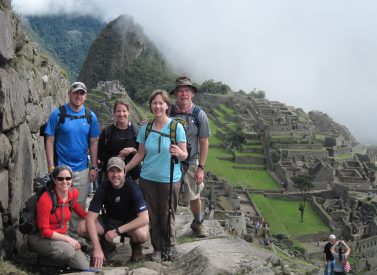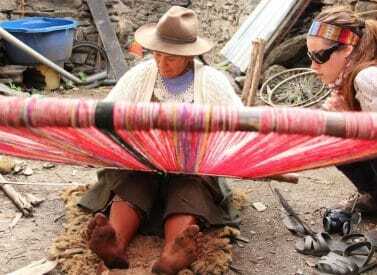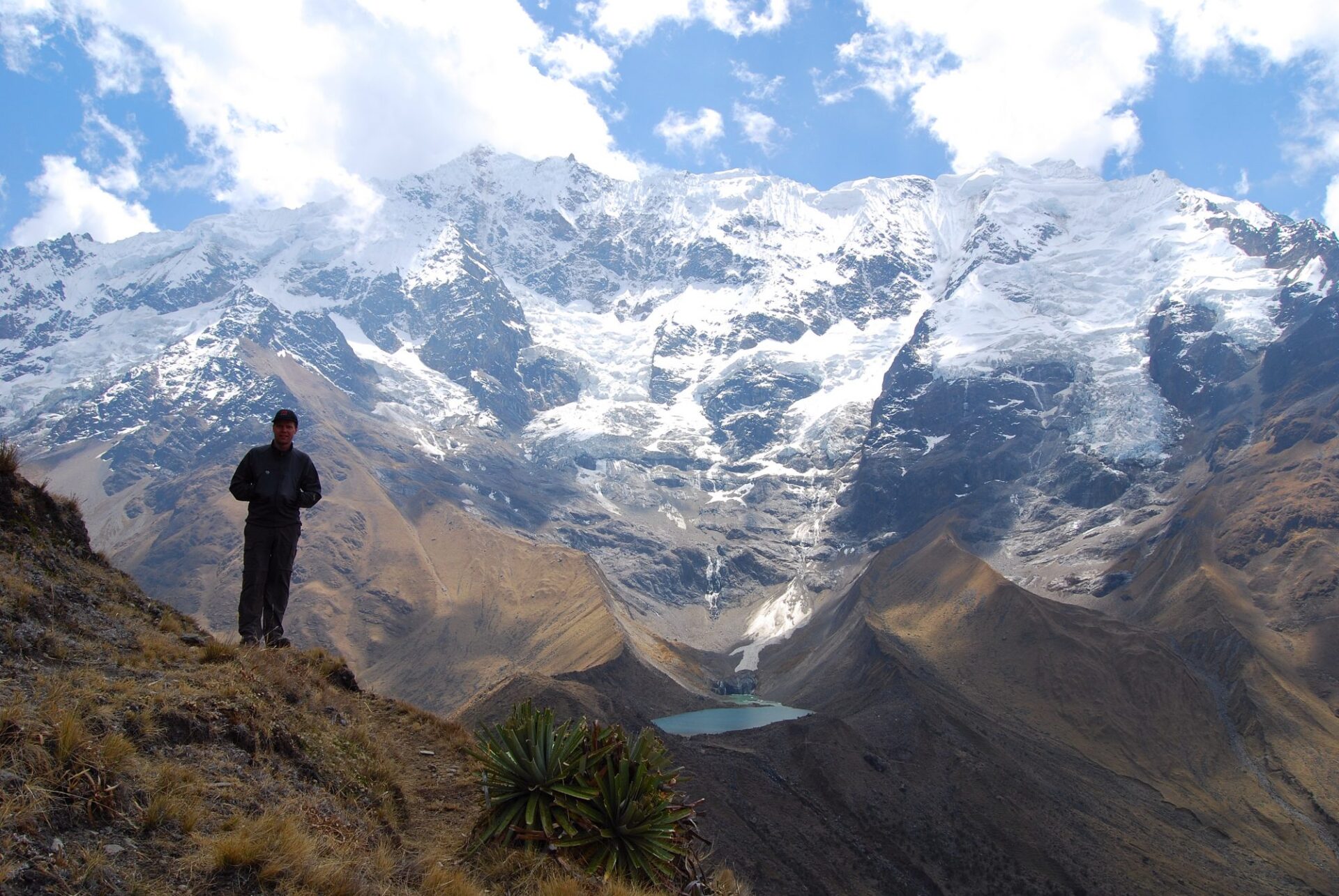
Salkantay Lodge Trek To Machu Picchu
Hike in style and comfort on our Salkantay trek, walking in magnificent scenery.
Stay in luxury lodges on your trip to Machu Picchu.
This Salkantay trek is a once-in-a-lifetime and stylish alternative journey to the famous Inca ruins at Machu Picchu.
You walk from one cosy mountain lodge to another through the Cordillera Vilcabamba, a spectacular mountain range.
More on Salkantay trek.
The enchanting valley of Soraypampa is the starting point of the trek, by many accounts more scenic and exclusive than the famous ‘Inca Trail’.
Hike through changing altitudes and varied terrain while you marvel at the beauty of the Salkantay Peak, Salkantay Glacier and Humantay Glacier Lake.
After a day’s walking, indulge in the comfort of enchanting mountain lodges with their innovative local cuisine and the warmth of the local people.
All the lodges offer private rooms with en-suite bathrooms, hot showers, bar/lounge and cozy reading rooms – some even have a jacuzzi!
Trip Highlights
Print Share Download as PDF-
Once-in-a-lifetime journey through the magnificent Salkantay area en route to the legendary Inca site of Machu Picchu.
-
Hike historic sections of Inca trail through 15 different eco-systems.
-
Cross a 4,572m/15,000ft pass, offering beautiful views of glaciers, valleys and mountains.
-
Each day’s trek ends with a hot shower in a cosy lodge, complemented by a massage or a dip in an outdoor jacuzzi.
Although it was only a short trip, it exceeded all our expectations. Truly amazing.
J Gibb
Full Itinerary
Day 1: Pick up from Cusco and drive to the start of trek. Trek to Salkantay Lodge, Soraypampa (L,D)
After an early breakfast, guests will be picked up starting at 7am at their hotel in Cusco for drive towards Soraypampa.
En route there will be a short break to visit the Inca ruins of Tarawasi near the town of Limatambo (approx 1.5 hours from Cusco).
After leaving Limatambo, we pass through the mountain village of Mollepata where we stop for a short coffee break before ascending a winding mountain road to Marcoccasa (30 minutes from Mollepata by vehicle).
Here we begin our trek to Soraympapa, on an old route called the ‘Camino Real’ (Royal Path). This is a good opportunity for guests to acclimatise and enjoy a beautiful 6-hour trek on their first day (hiking level: moderate). Guests who do not wish to trek may be transported to the lodge by vehicle.
The Salkantay Lodge takes its name from the majestic peak at the head of the valley – the ‘Salkantay’, the second most sacred peak in Inca mythology and, at 6,270m/20,570ft, the highest in the region.
After a warm welcome from the friendly staff, you will be shown to your room and have time to wash up.
The first afternoon is spent at leisure to adjust to the altitude. An evening briefing by the fireplace is followed by aperitifs and dinner.
Overnight: Salkantay Lodge (3,869 m/12,690 ft)
Trekking: Approximately 6 hours (including picnic lunch en route)
Hiking: Moderate
Day 2: Free day with optional acclimatisation walk, Salkantay Lodge (B,L,D)
Today is spent at leisure for rest or activities, depending upon your level of acclimatisation.
The most popular activity at Soraypampa is a half-day hike (3-4 hours, hiking level moderate to challenging) to a glacial lake where the more adventurous might take a very short swim!
This activity is excellent for acclimatisation and a first immersion into high-mountain trekking.
In the afternoon, guests may choose to trade the glacial swim for a relaxing soak in our outdoor jacuzzi.
In the evening, the guide will brief the trekking party on gear and the itinerary for the following day.
Overnight: Salkantay Lodge (3,869 m/12,690 ft)
Trekking time: 3-4 hours
Hiking: Moderate to challenging
Optional activities: Horseback riding (at additional cost)
Day 3: Trek from Salkantay Lodge to Huayraccmachay, overnight in Wayra Lodge (B,L,D)
This is the big day – the start of the four day trek to Machu Picchu.
After an early start you hike up the Rio Blanco valley, circling the Humantay Peak across from Salkantay Peak.
The highest point on the trek is a pass at 4,572m/15,000ft approx.
At the pass we stop to take in views of snow-capped peaks of the Vilcabamba Range in every direction, the south face of Salkantay towering above us, keeping our eyes out for Andean condors often visible in this area.
From the pass we continue our descent towards the Wayra Lodge (‘Wayra’ meaning wind or the place where the wind lives), our destination for the evening.
Overnight: Wayra Lodge (3,906 m/12,812 ft)
Trekking time: 6–8 hours (including lunch)
Hiking: Challenging, crossing a 4,572m/15,00 ft mountain pass
Day 4: Trek from Salkantay Lodge to Huayraccmachay, overnight in Colpa Lodge (B,L,D)
Today we enjoy a leisurely breakfast at Wayra Lodge. We then begin our trek by hiking downhill above the Salkantay River, through increasingly verdant scenery.
The Colpa Lodge is located in an open promontory at the confluence of three rivers.
The outdoor hot tub in this lodge has prominent views of lush green mountains and a small far-away local town.
Overnight: Colpa Lodge (2,870 m/9,414 ft)
Trekking time: 3–4 hours
Hiking: Easy to Moderate
Optional Activity: Afternoon bike from Manchaywaycco to Collpapampa (3 hours) – additional cost.
Day 5: Trek from Colpa Lodge to Lucmabamba, overnight in Lucma Lodge (B,L,D)
We depart early today and head down to Santa Teresa River Valley, through more populated rural areas.
We pass through banana, granadilla, avocado orchards and coffee plantations (said to be one of the best organic coffees in the world). We stop along the river for a picnic lunch.
After another hour of trekking, a private vehicle arrives to take us to the beginning of the ‘Llactapata Inca Trail’ (30 minute drive).
From the head of the trail it is a short climb (30 minutes) to the Lucma Lodge, set in an avocado orchard. We arrive in time to allow for exploration of the small village of Lucmabamba and possibly meeting with members of the local community.
Overnight: Lucma Lodge (2,135 m/7,003 ft)
Trekking time: 5–6 hours (including lunch)
Hiking: Moderate to Challenging (because of distance, not terrain)
Optional Activities
Zip Line in Santa Teresa: This is a full-day activity which replaces the trek. Operated by Cola de Mono. It has an additional cost.
Biking, option A): Yanama pass – Hornopampa – Lluskamayo (5 hours), easy to moderate, additional cost.
Biking, option B): Descent from Hornopampa to Lluskamayo (3.5 hours), easy, additional cost.
Day 6: Trek Lucma Lodge to Aguas Calientes via Llactapata pass, overnight in hotel (B,L,D)
After an early start and a hearty breakfast, we tackle the last day of our trek.
We head uphill for 2 to 3 hours towards Llactapata Pass (2,736m/8,976ft), where we come upon a distant but quite special view of Machu Picchu from the southwest, a view few tourists ever glimpse. An added value are the Llactapata ruins, which have recently been restored.
Lunch is provided at the observatory, in view of Machu Picchu.
We then begin our final descent to the Aobamba River through lush bamboo forests and more orchards and coffee plantations (2 to 3 hour descent). Aguas Calientes and Machu Picchu are a short (30 minutes) scenic train ride away.
We then arrive in Aguas Calientes to check in to our hotel for the night.
Overnight: Aguas Calientes (1,900 m/6,232 ft)
Trekking time: 4–6 hours
Hiking: Moderate to challenging
Day 7: Guided visit to Machu Picchu, train from Aguas Calientes to Cusco, end of tour (B,L)
We wake up early to have breakfast at the hotel and then make our way to the bus station for the ride up to Machu Picchu (30 minutes). A complete guided tour of Machu Picchu will be provided (2 hours). Guests will have about 4 additional hours to explore the site on their own – there is a lot to see and do.
Note: Climb Huayna Picchu or Machu Picchu Mountain. Permits have to be purchased in advance, contact us for more.
Afterwards, we return by bus to Aguas Calientes for lunch and go to the train station for the afternoon departure.
The train takes us to Ollantaytambo (1.5 hours), where a private vehicle awaits to take us to Cusco (1.5 hours). Upon arrival in Cusco (approx. 7 to 8pm) you will be dropped off at your hotel.
Prices From $3,500 / £2,846 per person
What's Included?
Accommodation as listed, all meals as indicated, transportation to/from Cusco, bilingual guide, mules/porters on trek, guided visit of Machu Picchu (incl. entrance fee), transport to/from Aguas Calientes, tips for lodge workers and staff in the field
What's Not Included?
International flights (we can look into these for you), insurance, tips, items of a personal nature, alcoholic or soft drinks, tips for guides (USD 5-10pp, per day)
Accommodation
The four beautifully-appointed mountain lodges are one of a kind. They have been designed with traditional Inca building techniques and blend perfectly with the surrounding environment.
At the end of each day, in the intimate 6-room lodges, you enjoy hot showers, fine gourmet meals, select wines, goose-down bedding, massages, outdoor jacuzzis and highly personalised service from local staff.
All guest rooms are warmly presented with down comforters and amenities. The eco-minded architecture effortlessly mixes traditional heritage with contemporary design.
The Salkantay Lodge has 12 private double, twin or triple rooms with private bathroom facilities, while the other lodges (Wayra, Colpa, Lucma) have 6 private double, twin or triple rooms, all with private facilities. Salkantay, Wayra, and Colpa lodges have an outdoor jacuzzi. Every lodge guarantees an ample supply of hot water for showers; there are no bathtubs in any of the lodges. Saunas are also available at all lodges at no additional cost.
Room heating ensures the temperature remains a com-fortable 68° F (20° C).
There are professional massage services at all lodges. The cost for a 50-minute massage service is US $60 (subject to change)
There is satellite-based communications at all four lodges along the Salkantay Trail to Machu Picchu. Due to the satellite-based nature of the system, signal reception may not be guaranteed in cases of continuous or extreme bad weather conditions.
Each lodge has a stationary rural satellite phone which our guests can use. There is ‘rural’ wi-fi internet service at all four lodges free of charge.
Tour Staff
At the lodges, local villagers simultaneously share their customs and learn how to be industry professionals, from guides to chefs to mule drivers to lodge staff.
The local teams, comprised of this rich blend of traditions and cultures, are trained to provide outstanding service and will go above and beyond to give each guest an unforgettable experience.
Local expert trekking guides are bilingual, English-speaking and of the highest quality.
Meals
Almost all dietary requirements can be catered to – please contact us for more.
Inventive menus which provide a refreshing take on the region’s most iconic dishes.
All offerings are locally sourced – from organic coffee blends to healthy snacks.
Activity Level
We have classified this as a moderate trek, and you need to be in good physical shape for it.
You hike 4-8 hours a day on 6 consecutive days, over rugged mountain trails at elevation.
There is a high altitude pass to cross at 4,572m/15,000ft before dropping into lower elevations en route to Machu Picchu.
Pre-trip preparation should include challenging cardiovascular exercise (including regular hikes on varied terrain) and a healthy, balanced diet.
Well-worn hiking boots and additional acclimatisation nights in Cusco before the trek are both highly recommended.
All guests are encouraged to hike at their own pace, taking breaks whenever needed, to ensure a successful and enjoyable trek for all.
Practical Information
Introduction to Peru
Peru is the perfect holiday destination for adventure travellers that want an amazing variety of activity, geography and cultural travel experiences.
The breadth of travel experiences in Peru is breathtaking – from trekking in the Andes to Machu Picchu to the tropical jungle of the Amazon, and plenty in between.
The people of Peru make it a special destination too, with its colourful and traditional street life and friendly locals.
Geography of Peru
Peru is made up of 3 distinct geographical areas: the coast, the mountains and the jungle.
The costa or coastal region is a narrow ribbon of desert 2,250 km long, crossed by fertile river valleys flowing from the Andes. It takes up 11% of the country and holds more than 40% of the population.
The cold Humboldt current gives rise to a blanket of mist – the garua – which hangs above coastal cities like the capital Lima from May to November.
Heading east, you’re soon climbing above the garua and into the Andes. The sierra, or mountainous region, covers some 25% of Peru’s territory and contains 50% of the population. The sierra inhabitants are mainly Indigenous or Mestizo, and many still speak Quechua or Aymara.
The sierra contains dozens of 6,000-metre snow peaks and volcanoes, including Huascaran (6,768m) the highest mountain in the tropics. The deep valley basins contain most of the towns and arable land; the terracing and canal systems of the Incas and pre-Incas are often still used today.
The eastern Andes are heavily forested up to 3,350m and sweep down into the Amazon Basin.
Peru’s selva or jungle makes up almost two thirds of the country’s area, but holds only about 6% of the population: the only towns with significant populations are Iquitos and Pucallpa.
Weather in Peru's Andes
You can also read about the weather of Peru in our blog.
The Andes
Climate depends largely on altitude. As a rule of thumb, below 2,000m climate is mild and above 2,000m warm clothing is required for evenings, nights and early mornings.
The Andean sun is very strong.
May to Oct (dry season in The Andes)
Cusco (3,300m): Average max/min temps: 22ºC /2ºC. Average 3 or 4 wet days per month.
Arequipa (2,380m): Average max/min temps: 26ºC /9ºC. Sunny more than 340 days/year with minimal precipitation.
On highland treks: Conditions are generally dry. However, at this time of year, expect a range of conditions within a single day: cold/freezing nights at camps above 4,000m, where pre-dawn temperatures can be -5ºC; warm, spring-like mornings and afternoons; and cold evenings.
Note that mountain weather can be fickle and localised, and that precipitation is not unknown in the dry season. Expect temperatures to swing between sun and shade, sheltered and exposed ground and with altitude gain and loss. A quick-setting sun means temperatures drop fast.
In the cloud forest, e.g. around Machu Picchu, daytime conditions are generally warm or hot, and evenings cool.
Nov to March/April (wet season in The Andes)
Cusco: Average max/min temps: 23ºC /6ºC. Average 13 wet days per month.
Arequipa: Average max/min temps: 25ºC /14ºC.
On highland treks: Wetter conditions, with cooler days and milder nights than dry season. Jan-Mar usually the wettest months.
Kit list
Good kit is vital for every trip.
Book with Andean Trails and get 15% off Páramo’s fantastic ethical and high performance outdoor gear.
Overview
When planning for the climatic conditions encountered in the High Andes, layering is the most practical and versatile clothing system. It’s worth remembering that our clothing keeps us warm by retaining and isolating the heat we ourselves create.
To best maintain body heat, several layers of lightweight, warm and quick-drying clothing are far more efficient than one or two thick layers. Layers should have the following qualities:
- Breathability (able to wick away the humidity produced by sweat):
- Isolation (able to keep in the warm air our body produces); and
- Impermeability (able to impede the passing of wind and water).
First (base) layer: This layer wicks the sweat away from our skin, thus helping keep the body dry and warm. To this end, synthetic fabrics such as polypropylene should be used.
Mid layers: These isloating layers should also be synthetic (e.g. the known polar linings such as polartec or windblock, which are light and insulate twice as well as wool). Very important layers for retaining body heat.
Outer layer / shell: Finally, the vital layer which protects us from climatic adversities. A breathable, wind-proof and waterproof anorak, such as Goretex.
Give plenty of thought to kit selection, and try to keep weight down. Below is a more detailed guide.
Detailed kit list
- 2 pairs synthetic inner socks (e.g. polypropylene, thermastat, coolmax) and 2 pairs thick loop-stitch/wool socks for cold.
- Trekking boots – should be well broken-in, waterproof and provide good ankle support.
- Trainers/sandals for city-wear, evenings at lower camps & river crossings.
- Base layer leggings (1 pair).
- Thick fleece leggings (or salopettes) (1 pair).
- Goretex-type over-trousers (or salopettes) (1 pair).
- Trekking trousers (2 pairs).
- Shorts – wear sparingly in early stages at altitude, as sun burns.
- Thermal base layer shirts (2).
- Microfleece mid-layer shirt (1).
- Shirt/t-shirt 1 or 2 for lower altitudes. Long-sleeved, collared shirt protects against sun
- Fleece jacket or similar (1).
- Warm jacket (down or synthetic). For camp and upper slopes.
- Waterproof Goretex-type jacket.
- Broad-brimmed sunhat, essential.
- Warm hat, fleece or wool. (N.B. Up to 30% of body heat can be lost through the head).
- Sunglasses with UV filter.
- Scarf for cold.
- Bandanna – to protect neck from strong sun.
- Light inner gloves
- Warm gloves, e.g. fleece, and outer waterproof gloves or mittens (1 pair)
- Mittens allow you to keep the fingers together, and better conserve heat (though they also make it difficult to perform certain tasks).
- Daypack (at least 30 litres). Comfortable and with waterproof lining or cover.
- Pair of telescopic trekking poles (optional). Note: You must have rubber tips on your poles if you tour visits Machu Picchu.
- Duffel bag or large rucksack for extra clothing, carried by horse/mule/porter while you are trekking.
- Water bottle (2 litres approx.).
- First-aid kit.
- Towel & wash-kit.
- Wet Wipes/antiseptic hand-wash cream.
- Sunscreen (factor 40+) and lip salve.
- Head-lamp (plus spare bulb and batteries).
- Penknife.
- Travel alarm clock.
- Plastic bags – ‘Zip-loc’ & tough bin liners.
- Camera and film / memory cards (take at least twice the amount you think you will need!).
- Book, e-book, mp3 player/ipod or other for free time.
- Binoculars.
- Spanish/English phrasebook.
All other non-personal trekking gear is provided at the lodges e.g. bedding, cutlery etc,
Miscellaneous others
- Money belt.
- Passport.
- U.S. dollars cash, mixed-denomination notes, undamaged and unmarked.
- ATM cash/credit card.
- Any inoculation certificates.
- Personal & medical insurance certificates.
- Presents e.g. Postcards from home.
ATOL holiday protection
Andean Trails has 25 years of experience of putting together the best South America holidays.
We pay a fee to the CAA for every licensable passenger we book since we hold an Air Travel Organiser’s Licence granted by the Civil Aviation Authority. In the unlikely event of our insolvency, the CAA will ensure that you are not stranded abroad and will arrange to refund any money you have paid to us for an advance booking.
We also offer ATOL (Civil Aviation Authority) protected holidays to give our customers peace of mind when booking and travelling.
When you buy an ATOL protected air holiday package from Andean Trails Ltd you will receive a Confirmation Invoice from us confirming your arrangements and your protection under our Air Travel Organiser’s Licence number 6275.
You can read more about ATOL, who is covered and what protections you have if not ATOL-covered, on our ATOL page.
What is ATOL?
The CAA’s ATOL scheme offers protection to your money and your holiday if you book with us. Not everybody is covered (see ‘Who is covered?’ for more), as you must purchase an ‘air package holiday’ with Andean Trails to be protected.
And ‘air package holiday’ is defined as including a flight and some ground services (hotel, transfer, trek etc). This is also known as an ‘ATOL-protected holiday’.
Who is covered?
To be covered by ATOL, you must book a flight and some ground services with us and be from the UK. If you are from the UK and only book ground services and no flights, you are not covered by ATOL (see below for more on how non-ATOL clients are covered).
If you are outside the UK and buy flights with us, you will be ATOL protected IF any of the flights booked with Andean Trails touches/stops in the UK at any point during your holiday package booked with us.
If you buy your flights elsewhere, please check with that agent if you are ATOL protected. Be careful with online flight purchases and make sure you know what protection you have, if any, before paying for flights.
Not all holiday or travel services offered and sold by us will be protected by the ATOL scheme. Please ask us to confirm what protection may apply to your booking.
For land only holidays not involving any air travel, in accordance with “The Package Travel, Package Holidays and Package Tours Regulations 1992”, all UK passengers booking with Andean Trails Ltd. are fully protected for the initial deposit and subsequently the balance of all money paid to us, arising from cancellation or curtailment of travel arrangements due to the insolvency of Andean Trails.
I’m not ATOL covered, what protection do I have?
If you are not ATOL covered, any payments you make to us go to a Trust account.
We can only access this money once your tour has been completed, meaning that if anything happens to Andean Trails Limited while you are on holiday, then your money is secure and you can either complete the trip or be able to make it home.
If you pay for your holiday with a credit card, some offer payment protection – please check with your cardholder.
You also should have cancellation protection written into your insurance (which we recommend you have at the time of booking) in case you need to cancel.
Peru’s Amazon Rainforest
Peru boasts in its Amazonian region a vast swathe of world-class tropical wilderness with several rain forest and cloud forest reserves which are home to an immense diversity of wildlife.
Accessible from Lima, Iquitos or Cusco, the Amazon jungle is just a short flight away.
In Peru’s southeast lies the extraordinary region comprising the Tambopata National Reserve and the Bahuaja Sonene and Manu National Parks, with the greatest animal and plant diversity anywhere in the world.
Whether you choose to base yourself at a comfortable lodge or enjoy a more demanding camping trip, you can be sure of a unique, exhilarating and unforgettable experience.
Arequipa & Colca Canyon, Peru
The beautiful colonial city of Arequipa is replete with history and culture, and is the gateway to the condors of Colca Canyon.
Nestled at 2,325m/7,627ft, the ‘white city’ sits at the foot of three tremendous volcanoes: El Misti (5,821m/19,098ft), Chachani (6,075m/19,930ft) and Pichu Pichu (5,542m/18,182ft).
Arequipa’s attractions include the Cathedral, Compañía de Jesús Church, Santa Catalina Convent and the Dama de Ampato (Juanita Mummy) Museum.
With a year-round spring climate and sunshine guaranteed for 300 days of the year, it is the perfect place to begin acclimatising before continuing upwards.
Nearby is the famous Colca Canyon. At hundred kilometres long, this incredible gorge is said to reach a maximum depth of 3,400m/11,155ft – twice that of the Grand Canyon.
An overnight tour to Colca gives you the chance to see the iconic, soaring condors of the canyon.
Cusco, Peru
Cusco is the archaeological and cultural capital of South America.
The one-time centre of the vast Inca Empire is a bustling highland city with bags of character.
Its whitewashed streets and plazas feature a fascinating blend of Inca and Spanish colonial stonework and offer endless possibilities for exploration.
You don’t have to venture far to find outstanding examples of high quality Inca architecture, including the monumental temple fortress of Sacsayhuaman.
There is also the fertile farming land of the Sacred Valley on the doorstep, with many Inca terraces, temples and fortresses, plus colourful local markets and small villages.
At night, Cusco offers an excellent array or restaurants and bars plus the continent’s best Andean folk music scene.
Kuelap, Peru
In the northeast of Peru lies Kuelap – the jewel in the massive archaeological crown of the Chachapoyas Cloud People.
The mystical structure of Kuelap – dubbed the Peru’s second Machu Picchu by locals – is 1,200 years old.
It features massive limestone walls towering 60 feet, pottery, bones and hundreds of mysterious round stone structures, and away from the crowds of other sites.
This is a remote area of sub-tropical valleys, half way down the eastern slopes of the Andes. The jungle is impenetrable, dense with low trees, bromeliads, bamboos, orchids and mosses.
Lake Titicaca, Peru
Lake Titicaca, at around 4,000m/13,123ft above sea level, is a vast shimmering body of water on the Peru/Bolivia border.
It is the world’s highest navigable lake, set against a breathtaking background of towering ice-covered Andean mountain peaks.
The islands and shoreline of Lake Titicaca support many Indian communities, including the well known floating islands of Uros and the more remote islands of Taquile and Amantani. Here, traditions are strong and it appears time really does stand.
Agriculture, fishing, knitting and weaving are important to the islanders and by staying a day or two you gain just a small insights into this traditional way of life.
Islanders welcome tourists into their homes and this is a wonderful opportunity to experience island life.
Lima, Peru
Lima, the capital city of Peru, is a vibrant bustling place with a wide variety of things to do.
Stroll or bike around the historic centre, visiting the many museums or just chilling out in a café or restaurant in Miraflores.
In Parque Kennedy you can sit outside in Parisian fashion and watch the world go by in cafes and restaurants, or walk to the shore and the cliffs overlooking the Pacific Ocean.
There are a number of artisan shops & market stalls, plus a big silver jewellery trade, and a burgeoning number of top end restaurants with delicious food.
The centre of Lima is home to impressive Colonial architecture – Plaza de Armas has the Palace, official residence of the president, on one side, and on another is the Cathedral.
San Francisco Church, home of the Catacombs, is well worth a visit, as is the Inquisition museum.
Machu Picchu, Peru
Nothing says Peru quite the way Machu Picchu does.
The Lost City of the Incas, perches dramatically on a ridge-top 400 metres above the Urubamba river. The extensive site, with its many terraces, temples and palaces, is set amid a beautiful landscape of deep gorges and thickly forested mountains.
When Machu Picchu was rediscovered early in the 20th century and cleared of forest, it was found to be very well preserved. It has since presented archaeologists with many unanswered questions regarding the role it played in Inca times.
The sense of grandeur, whether you arrive on the Inca Trail or not, is impressive.
Try to arrive early at the site to enjoy it at its best – and late afternoon can often see you almost alone in the ruins.
The Cordillera Blanca and Huayhuash, Peru
North east of Lima, the Cordillera Blanca offers fantastic mountain scenery and some of the best trekking and climbing in the Andes.
The Cordillera Blanca boasts dozens of peaks over 6,000 metres, including Peru’s highest Huascaran at 6,768m/22,205ft above sea level.
The Blanca range also contains the world’s largest concentration of tropical glaciers.
This is an ideal destination for treks, from just a few to 12 days or so and also an ideal starting place for learning or improving mountaineering skills.
The nearby Huayhuash mountain range contains a dazzling array of snow peaks including seven summits above 6,000 metres.
This is a trekking paradise with breathtaking majestic panoramas and stunningly remote and picturesque camping spots. There is no better place to visit to get away from it all.
Available Dates


Dates & Prices
Prices From $3,500 / £2,846 per person
2025 price, daily departures (min 2)
Low season (Mar 1-31 & Nov 1-Dec 14): USD 3,500pp
High season (Apr 1-Oct 31 & Dec 15-31): USD 4,700pp
Discounts for kids
Equestrian option available
Single supplements apply
Can’t find what you’re looking for? Get in Touch
+44 (0)131 378 5593
+44 (0)131 554 6025



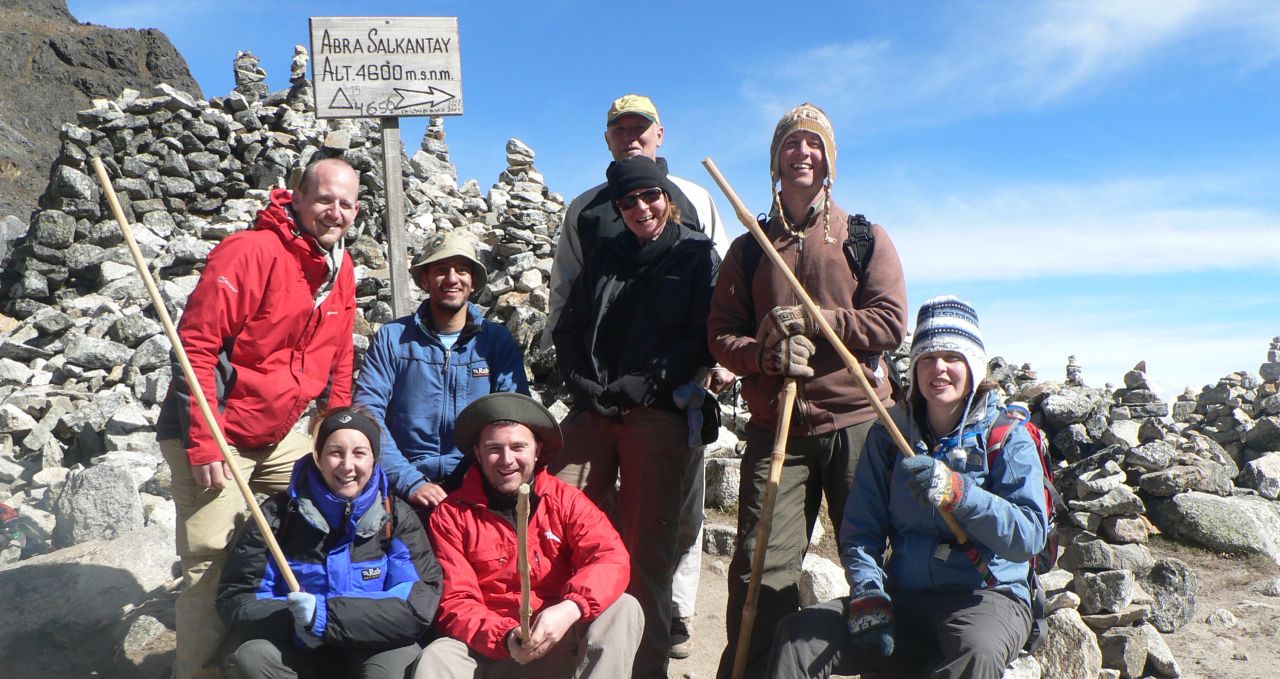
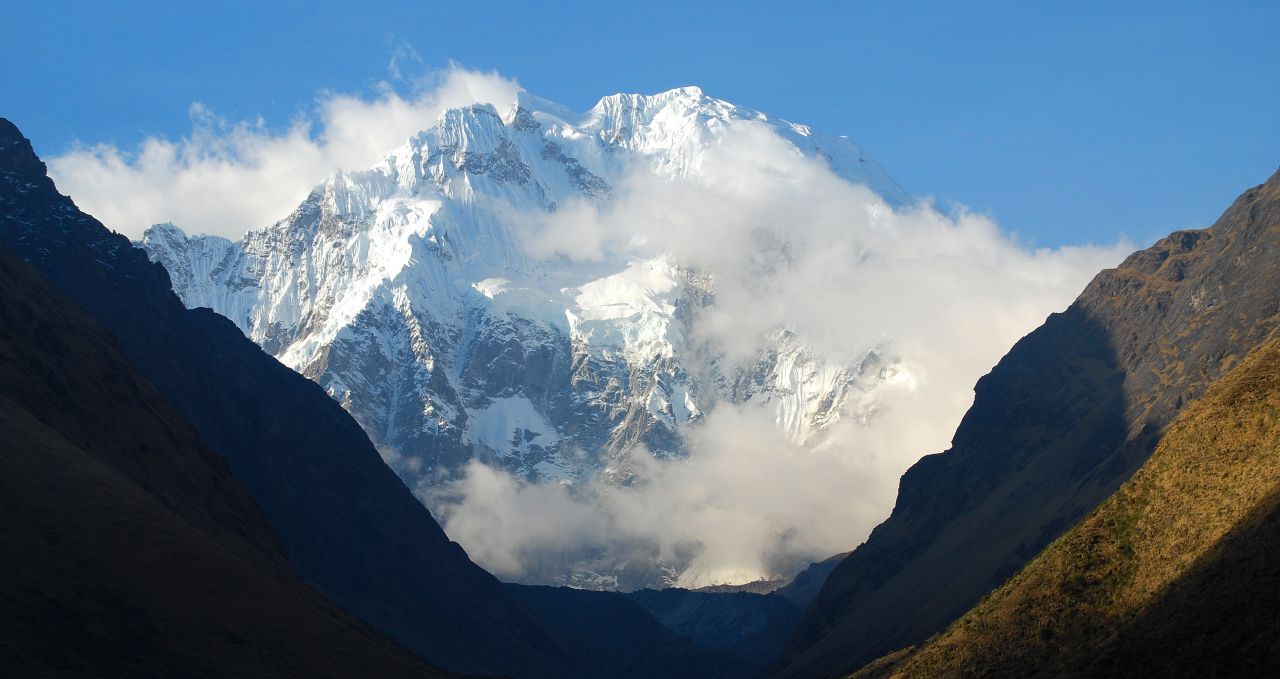
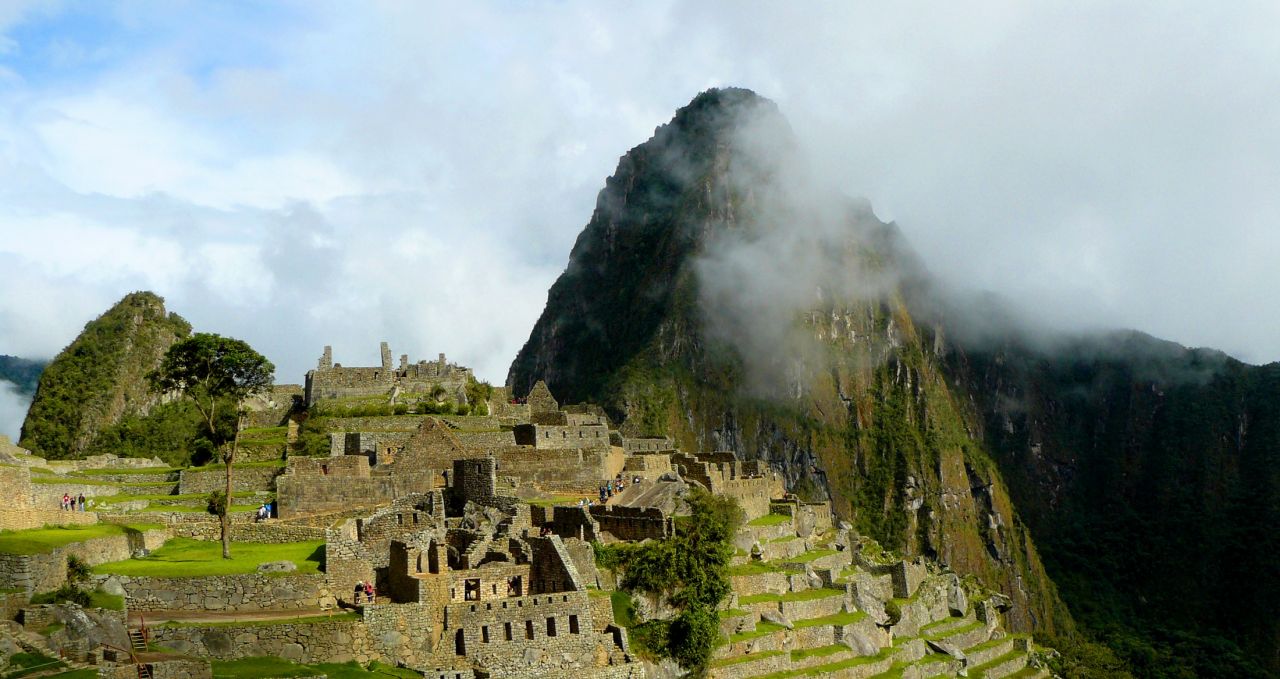
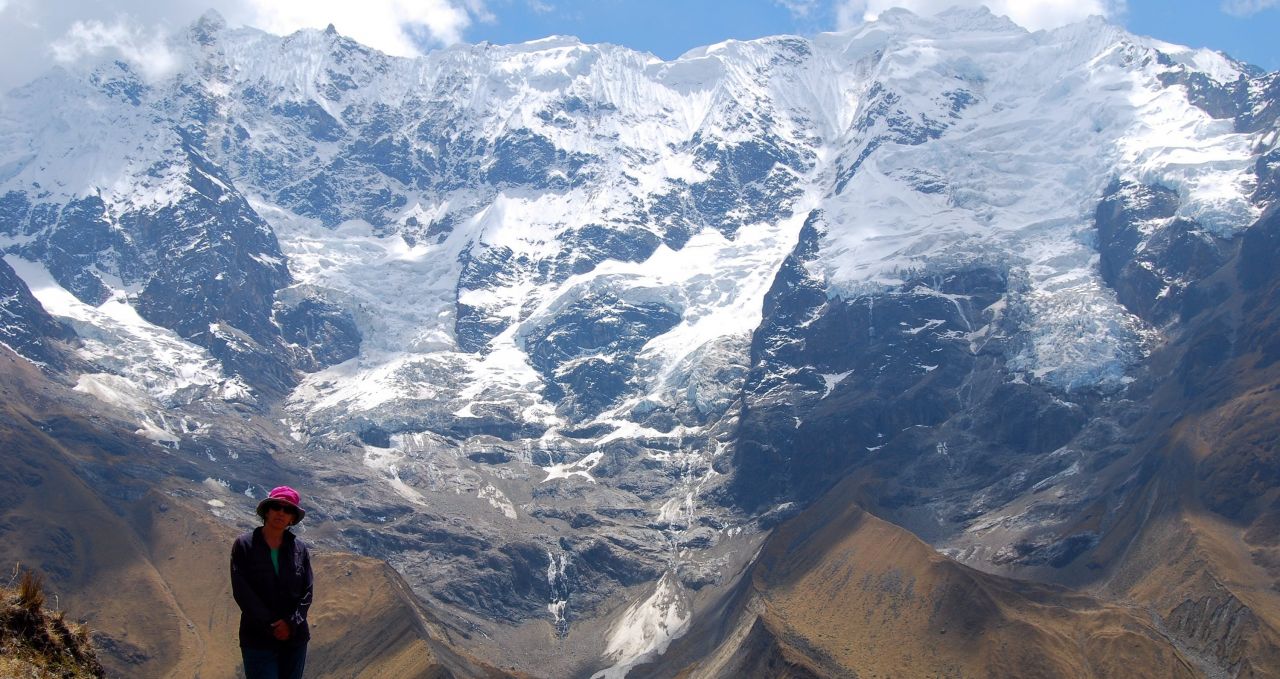
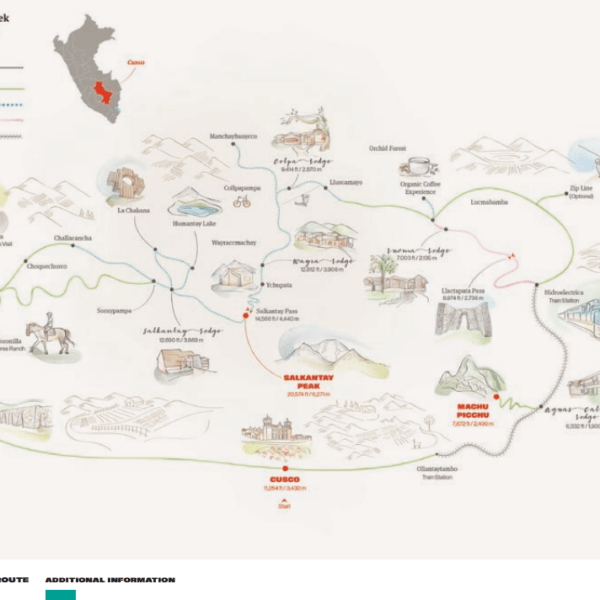
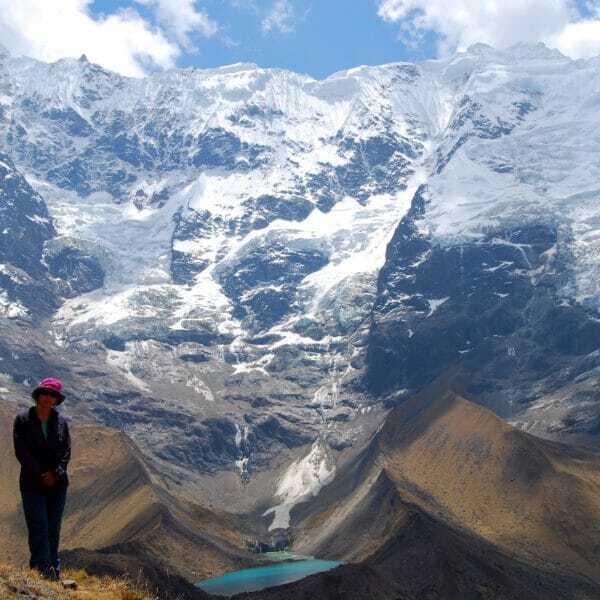
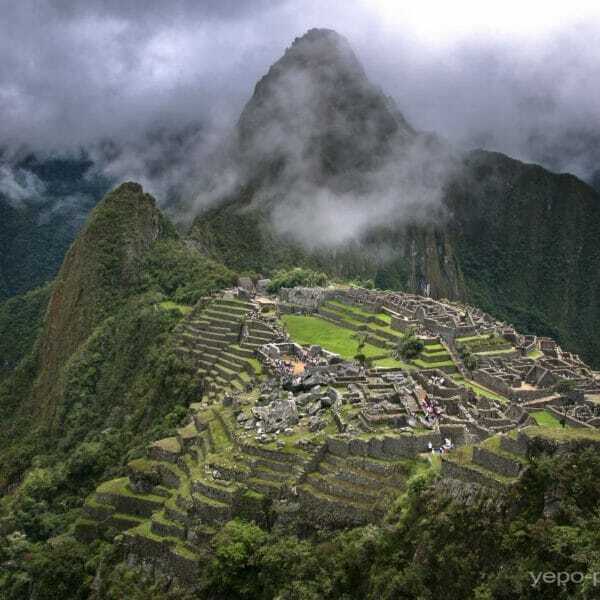
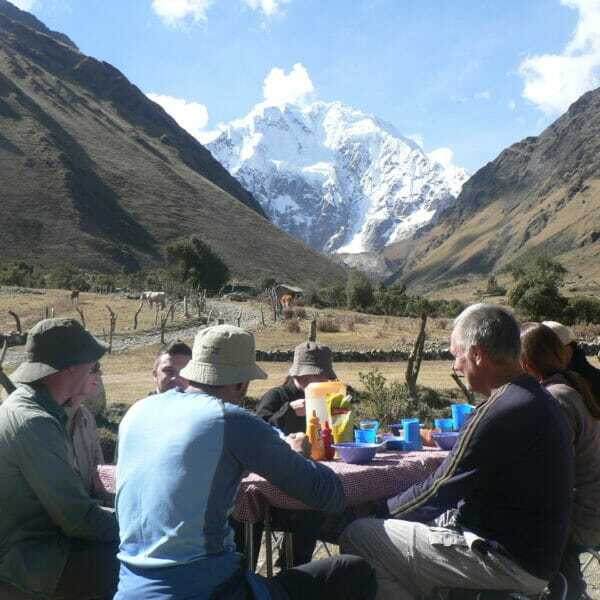
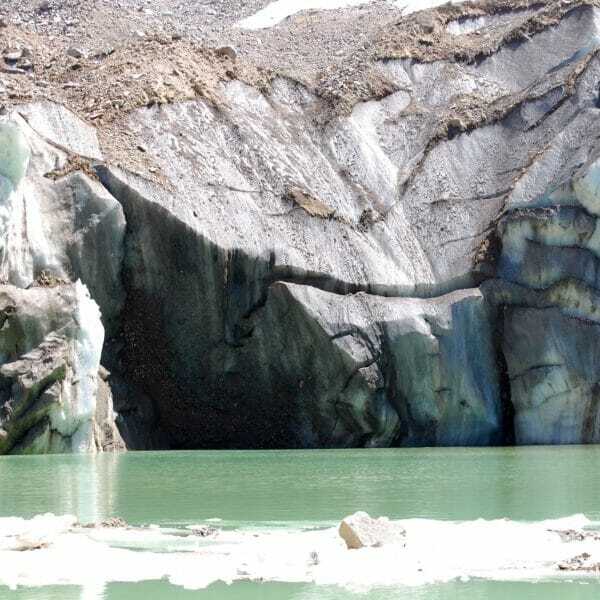
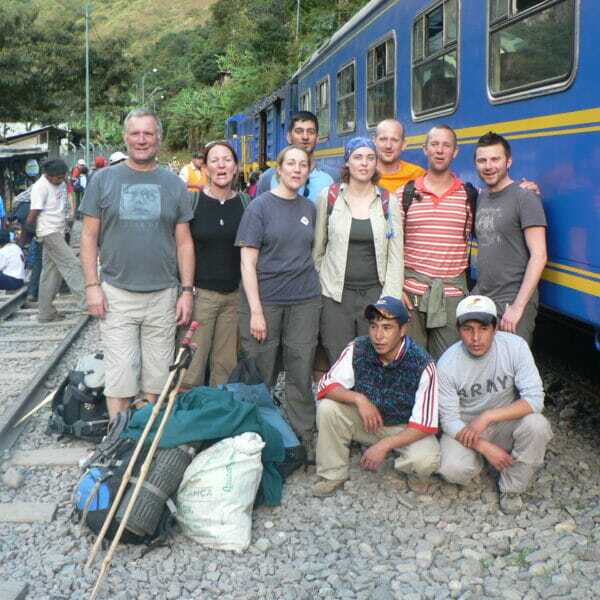
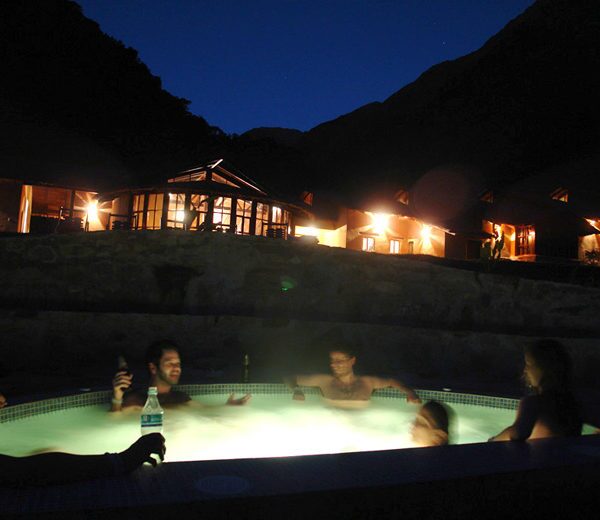
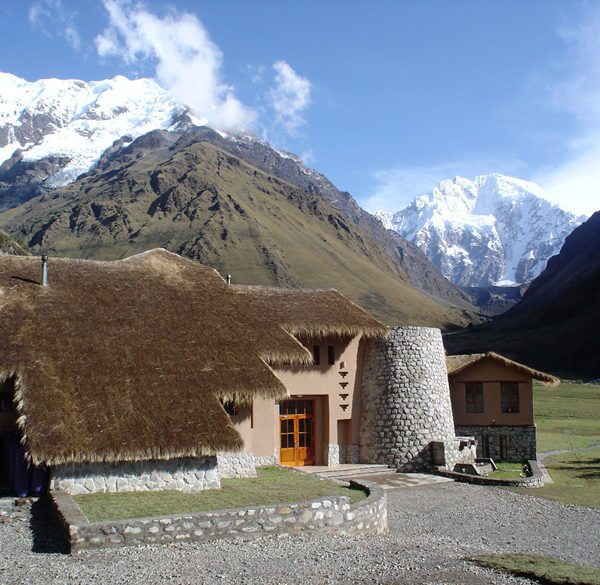
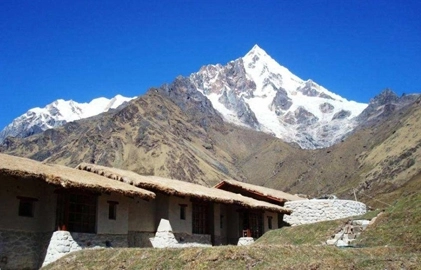
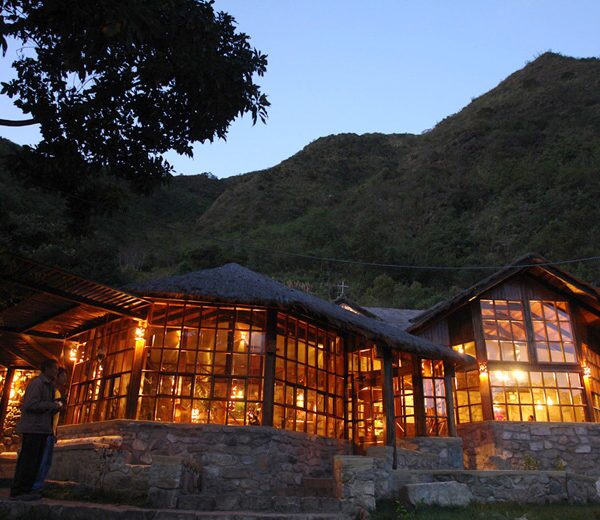
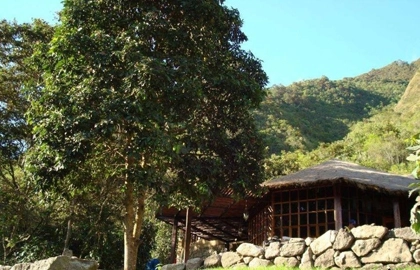
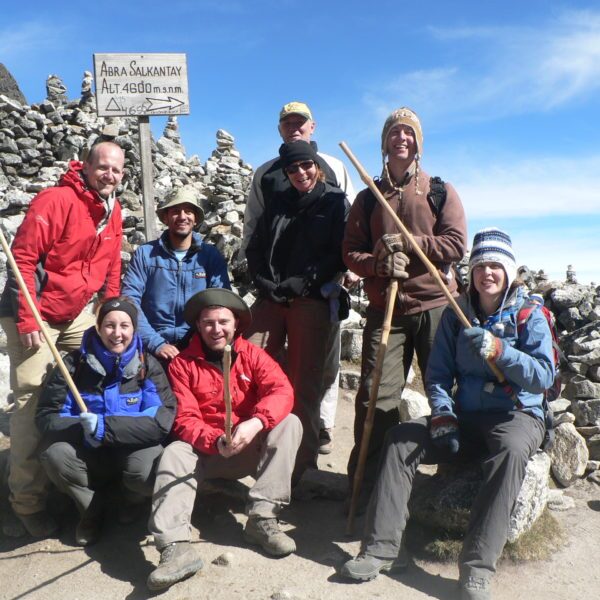
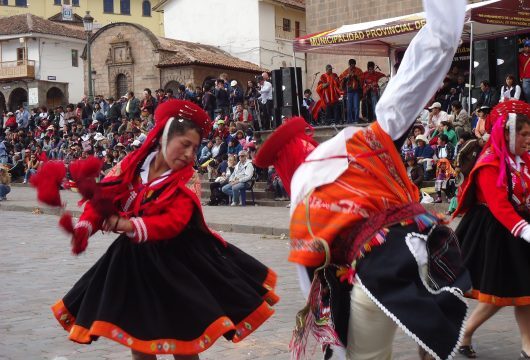
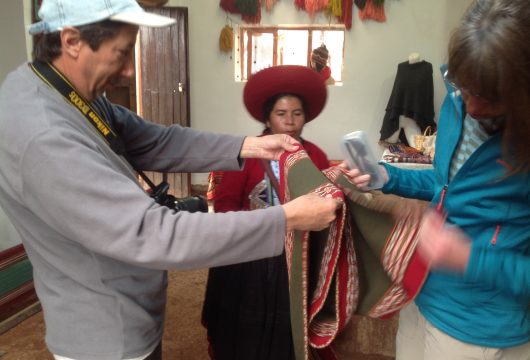
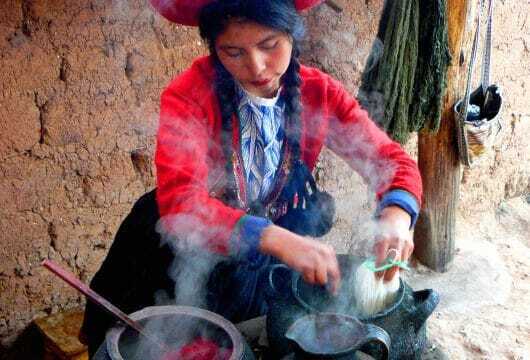
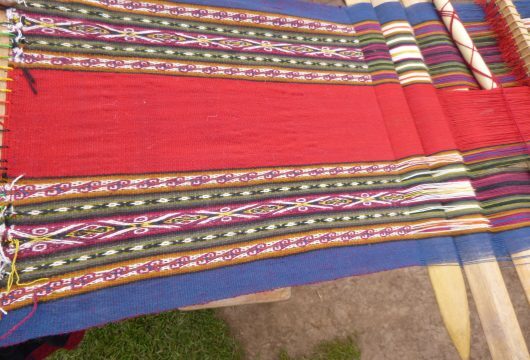
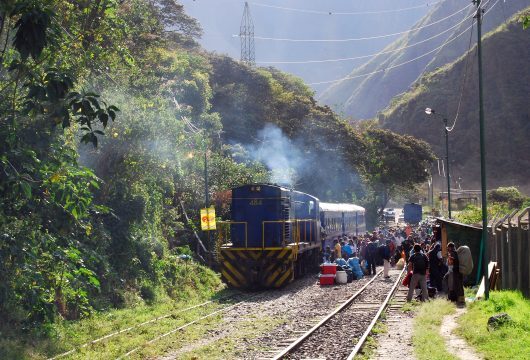
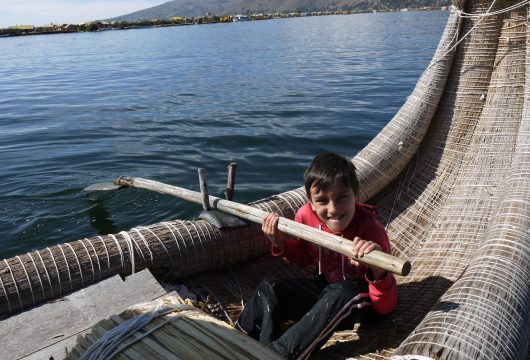
 a Group Tour
a Group Tour  a Tailor Made Tour
a Tailor Made Tour 